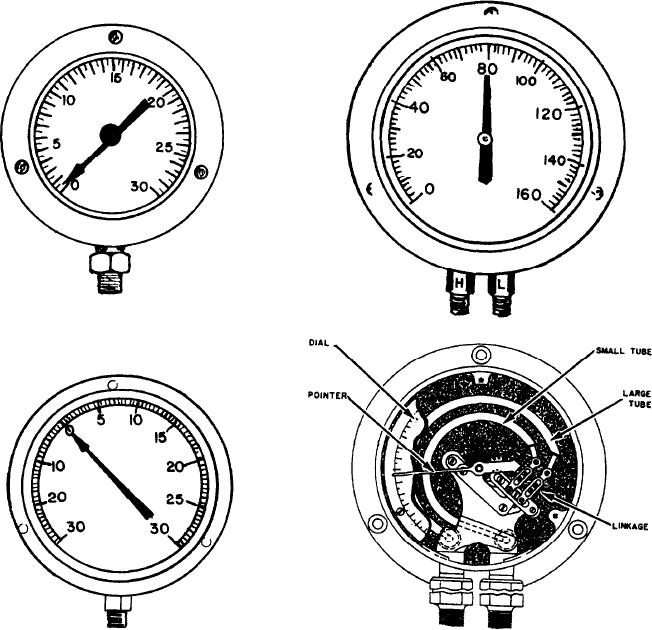
on a common dial, the assembly is called a duplex
beryllium-copper, or other metals, depending
gauge. Figure 5-13 shows a duplex gauge with
upon the requirements of service.
views of the dial and operating mechanism. Note
Bourdon-tube pressure gauges are often
that each Bourdon tube has its own pressure
classified as simplex or duplex, depending upon
connection and its own pointer. Duplex gauges
whether they measure one pressure or two. A
are used to give simultaneous indication of the
simplex gauge has only one Bourdon tube and
pressure at two different locations.
measures only one pressure. Figure 5-12 shows a
Bourdon-tube vacuum gauges are marked off
simplex Bourdon-tube pressure gauge with views
in inches of mercury, as shown in figure 5-14.
of the dial and gear and operating mechanisms.
When a gauge is designed to measure both
The pointer marked RED HAND in view A is a
vacuum and pressure, it is called a compound
manually positioned hand that is set at or
gauge; it is marked off both in inches of mercury
slightly above the maximum normal operating pressure
and in psig, as shown in figure 5-15.
of the machinery. The hand marked POINTER
Differential pressure may also be measured
is the only hand that moves in response
with Bourdon-tube gauges. One kind of Bourdon-
to pressure changes.
tube differential pressure gauge is shown in
When two Bourdon tubes are mounted in a
single case, with each mechanism acting in-
figure 5-16. This gauge has two Bourdon tubes
dependently but with the two pointers mounted
Figure 5-14.--Bourdon-tube vacuum gauge.
Figure 5-16.--Bourdon-tube differential pressure gauge.
Figure 5-15.--Compound Bourdon-tube gauge.
5-11

